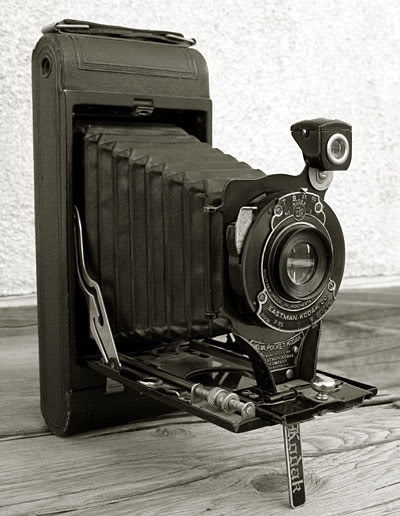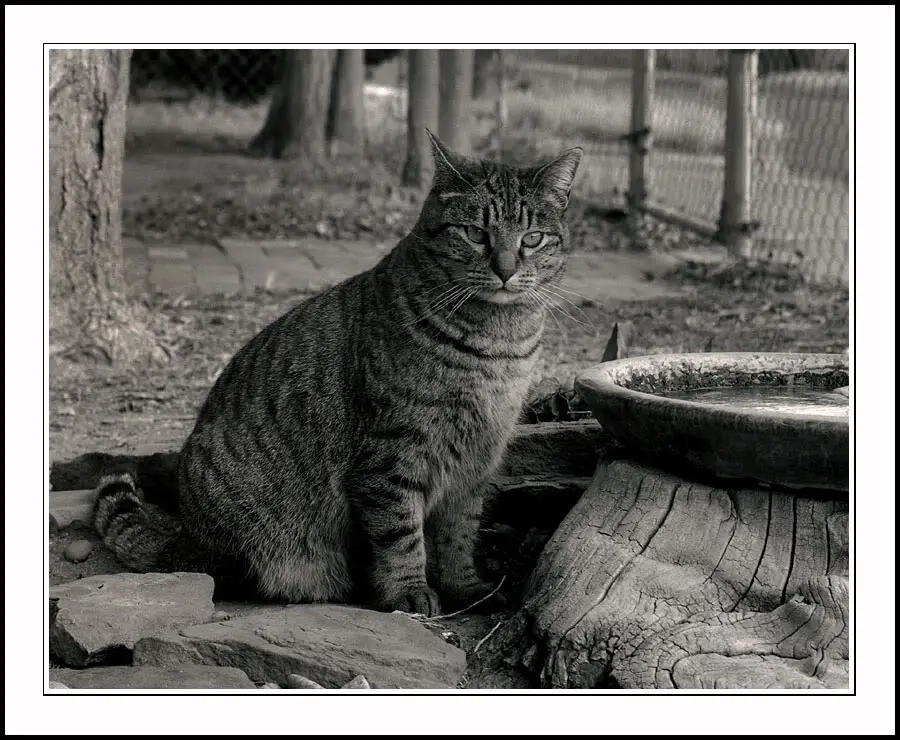home vintage cameras index

Kodak's 1A cameras all used 116-size film which yielded 2.5" by 4.25" negatives. That format was discontinued in 1984, but one can shoot with the cameras using still-available 120 roll film. As the 120 film is a quarter inch narrower than 116, pictures made with it will have a panoramic appearance with the image extending out to the film edges and having a length of 4.25".
It is possible to use 120 rollfilm in the No.1A Pocket Kodak with no special modifications. The pressure plate in the camera back has corner cutouts that will easily accomodate the narrower width of the 120 reel, and the box-like structure of the body of the camera holds the supply and take-up reels securely in place. The tongue of paper backing leader should be secured with one full turn to hold it tightly. The supply-side reel is placed in the other end, and the camera can then be closed up. At that point, the ruby window on the camera's back must be covered with black tape as the narrow 120 film would otherwise be fogged. The film advance key is then turned eight-and-one-half rotations to bring the film into position for the first exposure. For the next and subsequent exposures, two-and-one-half rotations of the advance key will provide proper framing with no image overlap. Using this method, six frames will just fit on a roll of 120 film. (Film and backing paper thickness as well as leader length varies from one brand to another, so some experimenting with advancing to the first frame should be done with the film you intend to use.)
The one remaining problem is avoiding unwanted light exposure on the film when removing it from the camera. Since the 116 take-up reel is wider than the 120 film, the film edges remain exposed and vulnerable; the easiest way to deal with that is to unload the film and get it into a developing tank in complete darkness. If the film is to be processed by someone other than the photographer it can be rerolled in darkness from the 116 reel back onto an empty 120 reel.


home vintage cameras index
 © mike connealy
© mike connealy